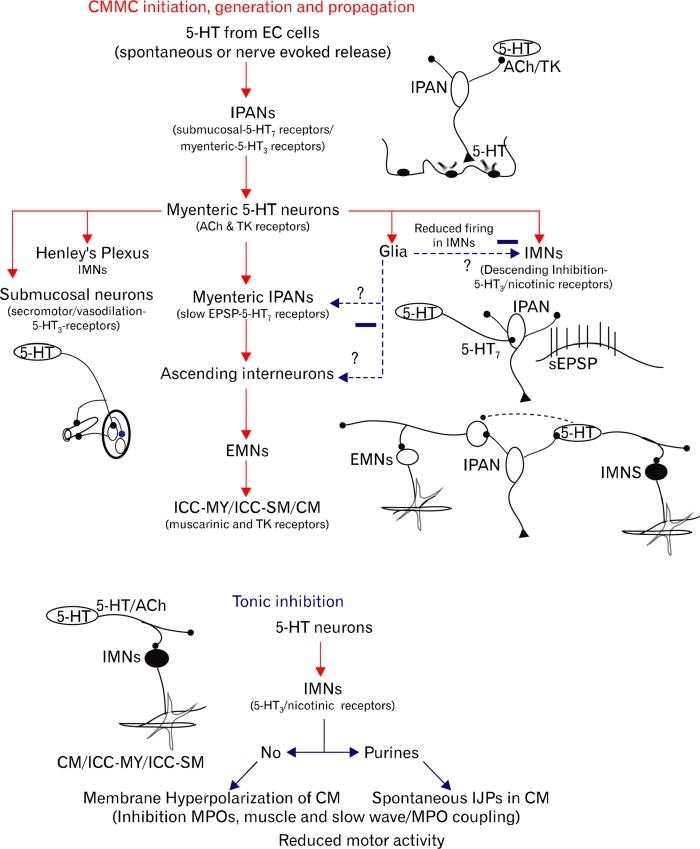Figure 6.
Schematic showing the possible sequence of events underlying the generation of a colonic migrating motor complex (CMMC) and tonic inhibition. CMMC: (1) mucosal release of 5-HT excites intrinsic primary afferent neurons (IPANs) that in turn activate myenteric 5-HT inter-neurons and motor neurons, (2) 5-HT neurons excite distal IPANs by activating 5-HT7 receptors to generate a slow excitatory postsynaptic potential (sEPSP), i.e., change their relatively inexcitable state to an excitable state, (3) IPANs, and perhaps 5-HT neurons, synapse with ascending excitatory nerve pathways, (4) activation of excitatory motor neurons (EMNs) that excite myenteric interstitial cells of Cajal (ICC-MY) to couple activity to longitudinal muscle (LM) and circular muscle (CM), (5) during the contractile phase of the CMMC, inhibitory motor neurons (IMNs) switch off for an extended period of time to allow full excitation of ICC-MY, (6) for the CMMC to propagate, activation of mucosal 5-HT leads to a strong activation of serotonergic descending inhibitory nerve pathways in the first phase of the CMMC and (7) couples this activity to secretomotor activity and blood flow. Glial cells by releasing nitric oxide (NO) or prostaglandins may reduce activity in enteric neurons. Tonic inhibition: (1) 5-HT neurons are spontaneously active and excite IMNs. (2) IMNs, which release NO and purines, inhibit pacemaker ICC-MY and the CM preventing myenteric potential oscillations (MPOs) and slow waves coupling to the muscle, and thereby inhibiting motor activity. EC, enterochromaffin; ACh, acetylcholine; TK, tachykinins; ICC-SM, submucosal ICC.

